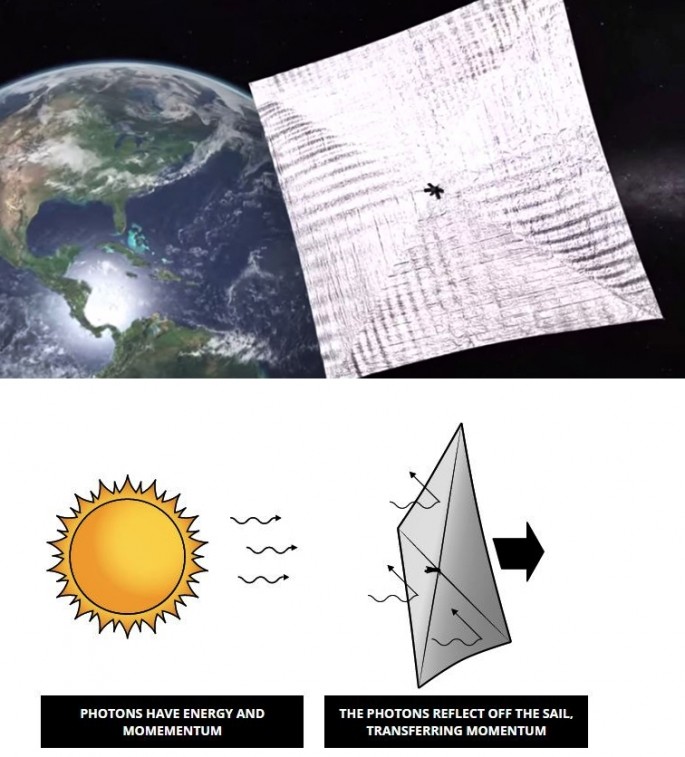Solar sails will one day power Earth's starships to other galaxies at incredible speeds and the first practical step in this direction will take place later this month when the Planetary Society tests a prototype solar sail in outer space.
The launch of a cube satellite or CubeSat named LightSail-1 on May 20 will be the first phase in testing a solar sail as a means of spacecraft propulsion.
LightSail-1 is about the size of a loaf of bread and is technically a three unit CubeSat. It will be the payload of the Prox-1 satellite developed by the Georgia Institute of Technology to liftoff aboard an Atlas V rocket.
The Planetary Society said its first LightSail won't reach an orbit high enough to try out the sail in the solar wind. LightSail-1, however, will test the mechanism for deploying the 32 square meter (344 square feet) Mylar sail. Each sail is just 4.5 microns thick, or one-fourth the thickness of an average trash bag.
LightSail is a citizen-funded project by The Planetary Society, the world's largest non-profit space advocacy group. It plans to send two CubeSats into Earth orbit carrying large, reflective sails measuring 32 square meters (344 square feet).
The May 20 test flight will pave the way for a second, full-fledged solar sailing demonstration in 2016.
Solar sails use the sun's energy as a method of propulsion. You can also call this "flight by light".
Light is made of packets of energy called photons. While photons have no mass, a photon traveling as a packet of light has energy and momentum.
Solar sail spacecraft capture light momentum with large, lightweight mirrored surfaces or sails. As light reflects off a sail, most of its momentum is transferred, pushing on the sail.
The resulting acceleration is small but continuous. Unlike chemical rockets that provide short bursts of thrust, solar sails thrust continuously and can reach higher speeds over time.
Once in space, LightSail-1's solar arrays will swing open. Four tape measure-like metal booms will slowly unwind, unfolding four triangular Mylar sails.
In May 2015, LightSail-1 will ride into orbit aboard an Atlas V rocket for a shakedown cruise. In 2016, LightSail-2 will be enclosed within Prox-1 and both satellites will be lifted into orbit by the Falcon Heavy, a new heavy-lift rocket built by private spaceflight company SpaceX.
LightSail-2 and Prox-1 will be released into an orbit at an altitude of 720 kilometers (450 miles), high enough to escape most of the planet's atmospheric drag. LightSail-2's goal will be to collect scientific data and improve solar sailing control.
Prox-1 will eject LightSail-2 into open space. Later, Prox-1 will rendezvous with LightSail and inspect it. When LightSail unfurls its solar sails, Prox-1 will be nearby to capture images of the historic moment when mankind's first solar sails unfurl in space.
If the project is successful, one more solar sail spacecraft, LightSail-3, will be built. LightSail-3's goal will be to travel to the L1 Lagrangian point. There, it will be used to detect geomagnetic storms on the Sun that can damage power and communication systems on Earth and orbiting spacecraft.
A video of the LightSail-1 mission can be viewed here.



























